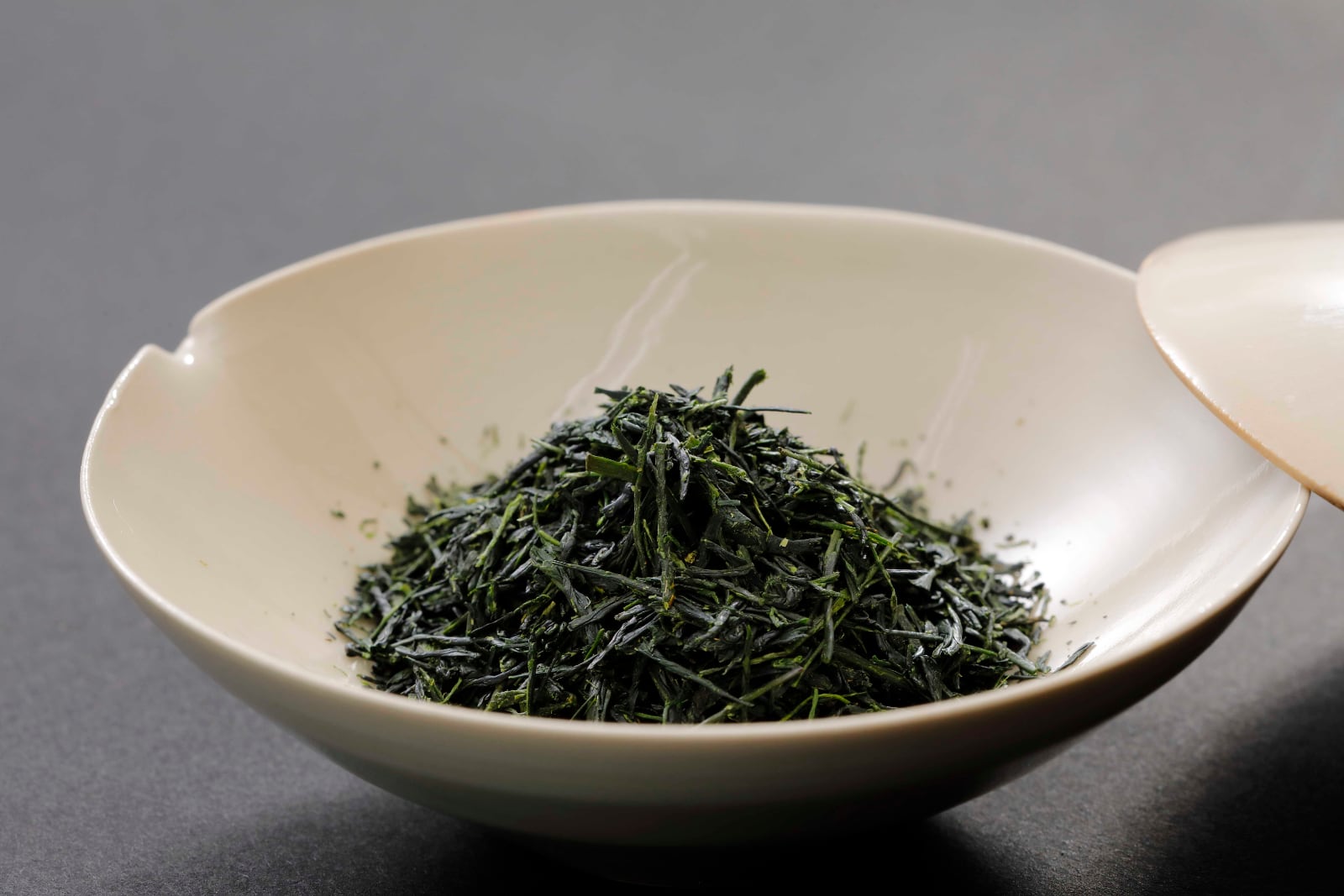February 2024 – Gyokuro from Yame
We chose a Gyokuro (玉露), commonly referred to as “jade dew”, originating from the Yame district (八女) in Fukuoka prefecture (福岡), on Kyūshū island (九州).

Photo courtesy of the producer.
Gyokuro: a Jewel from Yame
The Yame district (八女) in Fukuoka is renowned for its Gyokuro (玉露) tea cultivation, a type of green tea often described as "jade dew" for its exquisite quality. This region is celebrated not only for its Gyokuro but also for the consistent excellence of its produce. With its mild weather and fertile soil, Yame provides the perfect conditions for growing tea leaves that yield a delicate yet profoundly umami-rich brew, with minimal astringency and bitterness.
Gyokuro's unique character stems from its cultivation and processing methods, which set it apart from other Sencha teas. Approximately three weeks before harvest, the tea plants are covered with black sheets to block out sunlight. This crucial step reduces the conversion of theanine — an amino acid responsible for tea's umami flavor—into catechins, which are more bitter and astringent. This technique ensures that the tea leaves develop a rich, nuanced flavor profile, thriving under the protective cover to produce the expected quality.

Photo courtesy of the producer.
The harvest period spans from mid-April to early May, focusing on the first to the 4th leaves at the tip of each branch, ensuring only the youngest, most tender leaves are picked. Following harvest, the leaves undergo the Fukamushi process (深蒸し製法), where they are steamed longer than typical Sencha, softening the cell structure of the leaves. This is followed by a meticulous drying process, where the leaves are twisted in machines to reduce their moisture content to 5% (turning 1000 kg of fresh leaves into 180 kg of processed tea) and then further dried to achieve a final moisture content of just 1%, with extreme care taken to preserve the leaves' integrity. This entire process, from harvest to final drying, is completed within 2 to 3 days to ensure the tea's freshness is locked in.
Ushijima Seicha (牛島製茶), the tea producer behind our Gyokuro, was established in 1921. With over a century of experience in the green tea industry, they have mastered the art of tea cultivation and production. The company's dedication to quality and tradition has been recognized on the global stage, earning them the Grand Prix for Fukamushicha at the Paris Concours, part of the "Japanese Tea Selection 2022." This meticulous approach to tea cultivation and processing by Ushijima Seicha not only preserves the legacy of Gyokuro but also ensures that each cup offers a sublime taste experience, reflecting the rich heritage and natural beauty of Yame.
Photo courtesy of the producer.
Treasure Ship: A Setsubun Tradition
On February 3rd, Japan celebrates Setsubun, marking the eve of spring and a pivotal moment from winter to spring. This tradition, highlighted in our February 2019 blog post, involves scattering dried soybeans around homes to ward off evil spirits and attract good fortune. A unique custom in the Kansai region, particularly in Kyoto and Osaka, involves placing a Treasure Ship (宝船図) picture under one's pillow for auspicious dreams, a practice observed on January 2nd in the Kanto region (Tokyo, Yokohama, etc.) for New Year's blessings.
The Treasure Ship imagery is rich with symbols of prosperity and good luck, featuring the Seven Lucky Gods along with their emblems —such as a fish for Ebisu and a mouse for Daikokuten— laden with treasures. The sail often displays the word "Treasure," an image of Baku, a mythical creature that devours nightmares, or a palindrome signifying eternal fortune, embodying a poem about the serenity of time passing aboard a gentle ship. These pictures, distributed exclusively in select Shinto shrines in Kyoto and Osaka on Setsubun, are a testament to the enduring customs that celebrate the transition of seasons, inviting good fortune and dreams into the lives of participants.
The poem is: "長き夜の遠の睡りの皆目醒め波乗り船の音の良きかな," read as "なかきよのとおのねふりのみなめさめなみのりふねのおとのよきかな" for those who can read Hiragana. It means "The long night's distant sleep wakes us all, and the sound of boats surfing the waves is good" in English. It is a palindrome, meaning that it reads the same forward and backward.

Photo courtesy of the producer.
Brewing Gyokuro
For a straightforward method of preparing Gyokuro, use 7 to 8 grams of Gyokuro with 200 ml (approximately 7 oz) of spring water heated to 60℃ (140ºF). Steep the tea for 2 to 3 minutes.
However, for an authentic and flavorful Gyokuro experience, the tea producer suggests using a tablespoon (about 4 to 6 grams) of Gyokuro for 90 ml (about 3.2 oz) of spring water. The ideal steeping time for the first infusion is between 60 to 120 seconds at a water temperature of 60℃ (140ºF). For the second infusion, increase the water temperature to 80℃ (175ºF) and steep for a shorter duration to bring out a hint of astringency and bitterness in the tea.

Photo courtesy of the producer.
For more detailed guidance, refer to our blog posts from February 2019 and September 2015.
Enjoy!

